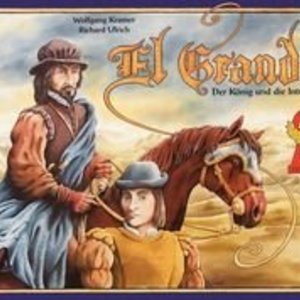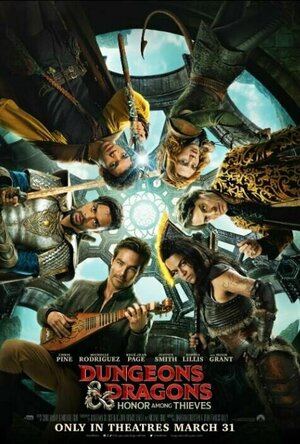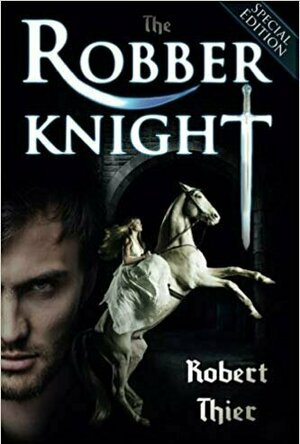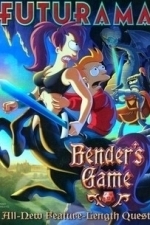
Lonely Planet Florence & Tuscany
Lonely Planet, Nicola Williams and Belinda Dixon
Book
Lonely Planet: The world's leading travel guide publisher Lonely Planet Florence & Tuscany is your...

Fifty Foods That Changed the Course of History
Book
Food plays a central role in ours lives: it is a necessity for all of us, a pleasure for many and an...

Twenty-First Century Lesbian Studies
Katherine O'Donnell and Noreen Giffney
Book
An enlightening, entertaining look at what the term "lesbian" really means--and what it means to be...

Mimpi Dreams
Games and Entertainment
App
50% off for a limited time as part of the App Store’s Children’s Day promotion! Selected by The...

El Grande
Tabletop Game
In this award-winning game, players take on the roles of Grandes in medieval Spain. The king's power...
BoardGames
BankofMarquis (1832 KP) rated Dungeons and Dragons: Honour Among Thieves (2023) in Movies
May 26, 2023
The 4th film to be based on the RPG game, this D&D is no relation to the previous three and should be viewed as a reboot of the franchise…and if HONOR AMONG THIEVES is an indication of where this film series will go, then the audience is in for a fun ride, indeed.
Written and Directed by John Francis Daley and Jonathan Goldstein, D&D follows a smooth talking, good-looking musician (the perfectly cast Chris Pine), his tough-as-nails best friend (the perfectly cast Michelle Rodriguez) and their merry band of thieves as they go on a quest to right wrongs and achieve a goal.
What that goal is doesn’t really matter as it is the journey - not the destination - that matters and the journey is quite fun thanks to an enjoyable cast and a script and direction that evokes memories of THE PRINCESS BRIDE, THE LORD OF THE RINGS and, yes, MONTY PYTHON AND THE HOLY GRAIL along the way.
The cast (Pine, Rodriguez, Rege-Jean Page, Justice Smith, Sophia Lillis and Hugh Grant) know exactly what type of film they are making and jump in with both feet to have some fun, fight some creatures and make a family-friendly medieval action/adventure comedy that works.
Credit, of course, goes to Daley & Goldstein and this appears to be their first film together as Directors. If that is the case, the BankofMarquis is eager to see where they go from here.
While, I’m sure, there are plenty of Easter Eggs in this film for the D&D fan, the BankofMarquis caught none of that and just sat back and had a really fun 2+ hours, chuckling out loud on more than one occassion.
This film is now streaming on Paramount Plus. If you run across, check it out, you’ll have a good time.
Letter Grade: A-
8 stars (out of 10) and you can take that to the Bank(ofMarquis)
Kara Skinner (332 KP) rated The Robber Knight in Books
Sep 10, 2019
Sir Reuben, the dreaded robber knight, has long been Ayla’s deadliest enemy. He has prayed on her and her people ever since her father fell ill, and she swore he would hang for his crimes. Now they are both trapped in her castle as the army of a far greater enemy approaches, and they have only one chance: stand together, or fall.
This book wasn’t bad, honestly. I’m a huge fan of historical fiction, and it had been awhile since I’ve read a medieval love story, so that was a nice change of pace.
The author is a historian, so there are a lot of little things in this book that you don’t see in a lot of other historical romance books. For instance,you can’t pull out arrows because there are often barbs attached to cause fatal wounds if pulled out. I did like learning about all of these facts. But sometimes Thier lets the historian in him gets the best of him, but more on that later.
Lady Ayla was a pretty interesting character. Headstrong and wise for her years, she is very noble and progressive. She has all of the makings for a great leader– with the exception of knowledge. I loved how kind and committed she was to her people and I love the fact that she has some spunk. I mean, if I’m getting robbed in the forest by this random stranger, then I hope I would swear him out too (of course, if I could beat him up and get away, then that’s even better, but Ayla doesn’t have much self-defense skills). But there were many times that she was annoying, like her insistence on being near battles, even before she started treating the sick. And how she tried to manage Sir Isenbard during battle. She had called on him for help because he was an experienced knight, and now she was questioning his commands and strategies in the heat of battle!
Mostly, though, I really did like Ayla. She defines the idea of nobility. With war inevitable, she’s willing to ride personally to the edges of her land to warn her subjects and she is always at the outskirts of battle to help care for the wounded. She invites everyone into the castle for their safety and rations herself as well as the others to conserve food. She’s even willing to corrupt herself to save her people.
Reuben is an excellent character as well, although it did take me awhile to like him. In the beginning he fell a little flat. It’s clear that he used to be a knight but something happened and now he robs people for his own greed. A near-death experience and being saved by Lady Ayla reawakens the humanity in him. And apparently also some depth.
In the beginning of the book he spends a lot of his time admiring his loot and laughing about his victims, who thought they had a right to steal from him. But that’s all he does. We have no real insight into his character or backstory until after he’s in Ayla’s care. Only then are there hints of a bad history where he had been arrested many times, been tortured, and had at one point been a member of respectable society. If it weren’t for the fact that I liked Ayla’a character and the plot so far, I probably would have stopped reading.
Thier is a writer who has really good potential in becoming a great romance writer, especially for historical fiction. The plots have some unique twists that are augmented by his knowledge of history and after Reuben’s character shaped up, he was an excellent love interest. But there is one huge problem with this story: the footnotes.
There are so many footnotes throughout most of the book that I feel like I’m reading a history textbook, which is not good when I usually read romance novels to take a break from homework. Not only are they distracting and unnecessary, but they are also rude and condescending. Sure, sometimes they were useful, like in explaining the references to the seven princes of hell. Another one was a pretty funny anecdote about how one of his readers had actually confirmed that lard burns and that burning arrows work because they had actually done it. There is also a lot of wit throughout the footnotes which is pretty amusing. But most of the time, they were annoying.
For instance, Robert Thier thought it was necessary to include a footnote about how witches were considered bad during medieval times. Seriously? Even if someone failed history, we know that witches are not considered fine, upstanding citizens. Or maybe he thinks all of us have been locked in our rooms with no books, internet or television for our entire lives and for the month of October we all miraculously fell into a coma so we couldn’t see the giant blow-up witch in the neighbor’s yard. And then we’d all wake up singing Christmas carols after the month long coma without a care in the world because this happens every year so we don’t know what a witch is. (I’m developing a conspiracy theory about how these strange comas was caused by witchcraft.)
Maybe Thier assumed that instead of us thinking Reuben was scared of witches when he wondered if Ayla was one, we just thought he was commenting on how much Ayla looked like Sandra Bullock.
And one of the footnotes was just plain offensive. Here is the line of text that the footnote is attached to: “Heel! Abominable villain! You dare defy me?” (page 74)
Now, here’s the footnote: “Sorry to disappoint the ladies, but this doesn’t refer to high heels. It is a medieval term for a very nasty person.”
Excuse me? Did you just assume that I thought it meant high heels and that would make me excited? What world do you live in?
Apparently he thinks “the ladies” are so dumb that we are incapable of taking context clues and we immediately think everything relates back to fashion. Maybe I didn’t know it meant “very nasty person”, but it’s pretty clear it’s a swear or insult of sometime, not a freaking Jimmy Choo. Does he just imagine us thinking high heel every time we hear the word?
“She broke his nose with the heel of her hand.” Oh. High heel!
“Heel, fido! I said heel!” Oh. High heel!
“It will take one or two days for your cut to heal.” Oh. High heel! (Because if he thinks we don’t understand the difference between uncomfortable footwear and an insult, then he probably thinks we can’t spell, either).
But hey, at least Robert Thier thinks women can memorize stuff, because the footnote links stop as the vocabulary is repeated instead of new terms being introduced.
Aside from the footnotes, I really do like this book, and I can’t wait to read the second part of it, which I’ll read soon. Thier still has a long way to go, but I think after he has more experience, he’ll write some great books.
Ross (3284 KP) rated Awaken Online: Retribution (Side Quest) in Books
Mar 1, 2019
The brilliance of Awaken Online, aside from the storytelling and the novelty of having a main character with an "evil" alignment, is the sheer scale of it. Jason, the main character, summons zombies and skeletons to engage in large scale battles and assaults, and the focus of the books quickly became quite large-scale. The action is very much strategic where Jason orchestrates the attacks and defences from a distance, using all the weapons at his disposal to great, at time devastating, effect.
It is refreshing here to take a bit of a breather from all of that and focus more on a smaller scale. At the end of the second AO book, Riley was rewarded with an intriguing bow as a prize for completing an epic dungeon task. That reward came with a quest to complete to maximise the weapon's abilities. This book tells the story of Riley on that quest alone. Due to that reason, and her not being the same class as Jason, the book has a very different feel to it. The action is not large-scale and strategic, it is small-scale and pretty frantic at times.
The first half rattles along really well, with us getting more appreciation for Riley's personal life outside the game of Awaken Online, and the troubles she is facing at school. On her quest she quickly falls in with a gang of other players heading the same way, and she helps them to improve their skills. Once in the magic city of Vaerwald, the book takes on a different feel again, as the city feels more like early industrial than medieval. Here Riley sets out investigating an apparent "magic plague" that seems to have struck down some children and is spreading.
There are some thrilling set piece action sequences in the later stages of the book, and some great character development for Riley.
I hope the story here has more of a bearing on the final book in the main series as I can see some scope for this.
Overall, an engaging distraction from the somewhat heavier main books, with a different feel. While the book itself is quite short, it felt like a dragged a little in places, but has continued the overall world's story.
BookwormMama14 (18 KP) rated The Beautiful Pretender (A Medieval Fairy Tale, #2) in Books
Jan 2, 2019
The king has ordered Reinhart, the new Margrave of Thornbeck to marry. Knowing he can not deny the king, Lord Thornbeck summons the ten women the king has chosen as suitable matches. For two weeks he plans to test these women to find the most noble lady among them, and choose her as his bride. Little does he know that not all of the ladies presented to him are truly born of nobility. When Avelina arrives at Thornbeck castle, masquerading as Lady Dorothea, she is convinced she will be found out. However as the days pass, she finds it easier to pretend to be a lady, instead of the maidservant she truly is. She has two goals: To make sure no one discovers that she is a servant, and to keep Lord Thornbeck from choosing her as his bride. For if her secret is revealed, destruction and ruin will be brought upon Avelina and her family.
The Beautiful Pretender is "Happily Ever After" at its finest! Melanie Dickerson has a beautiful gift for bringing classic fairy tales to life in an incredibly new and different way. Every page is filled with beautiful descriptions of the castle, clothes, grounds and lifestyle of the medieval times. These fairy tales (and especially Avelina's story) are much more realistic than the Disney adaptations (however I am addicted to fairy tales in general), and makes me feel like these stories could have actually happened. The Beautiful Pretender will have you biting your nails from the first page and there are plenty of suspenseful moments that will keep you turning those pages until you can not keep your eyes open any longer! (Yes, I say this from experience...) This story is such a lovely romance. Seeing in our characters something that I believe we can all identify with, the desire to be wanted and loved for who we are. And we must never forget the One who loves us more than anyone ever could. He who loves us exactly as we are, regardless of our heritage and in spite of our imperfections. Never forget that as a son or daughter of our Lord, you are royalty.
I received a free copy of The Beautiful Pretender from Thomas Nelson Publishers through Book Look Bloggers in exchange for my honest review. All opinions expressed are mine alone.
Gareth von Kallenbach (980 KP) rated Futurama: Bender's Game (2008) in Movies
Aug 14, 2019
This time the film starts out as a standard episode rather than continue the events of the past film. In true Futurama style, there are references to past characters and pop culture gags throughout. The early focus of the story is on the Dark Matter fuel shortage that is controlled by the greedy Mom and her corporation. Mom insists that prices are way up so she has to charge more for the precious starship fuel, but avoids any questions related to her record profits related to the ever rising fuel prices.
With the rising fuel costs the Planetary Express Office, is put on a very strict flight schedule that causes havoc amongst the crew. Fry (Billy West), still drifts aimlessly about life, Amy (Lauren Tom) is as shallow as ever and Leela (Katey Sagal), has an ager issue and is outfitted with a shock collar that jolts her whenever she loses her temper.
Bender (John Di Maggio), has a larger issue as he spots some of the staff children and their friends playing Dungeons and Dragons and wants to be a part of the action. It is learned that robots were not built for imagination so when Bender takes up the game and becomes the entity Titanius, he soon has a hard time distinguishing between reality and fantasy. Combine this with Leela’s entry of the Planet Express ship into a Demo Derby and you get a premise ripe with laughter.
The story shifts into high gear when Professor Farnsworth (Billy West), decides to use his anti-backwards crystal to end his old flame Moms hold on the fuel industry. The Crew make a startling discovery as they battle mom, and thanks to the power of the crystal and Bender, find themselves in a strange medieval world where each of them has new identities in this alternate universe.
In a race against time, the Planet Express staff must not only survive the alternate universe, but defeat Mom and her plans for universal domination.
With sharp picture and sound, this is a very enjoyable new adventure for fans.
There are loads of extras which include deleted scenes, commentaries, and a look at the next film “Into The Wild Green Yonder”.
All in all a welcome and satisfying film that should delight fans and help keep us happy until the new film arrives next year.




